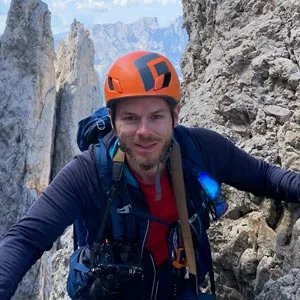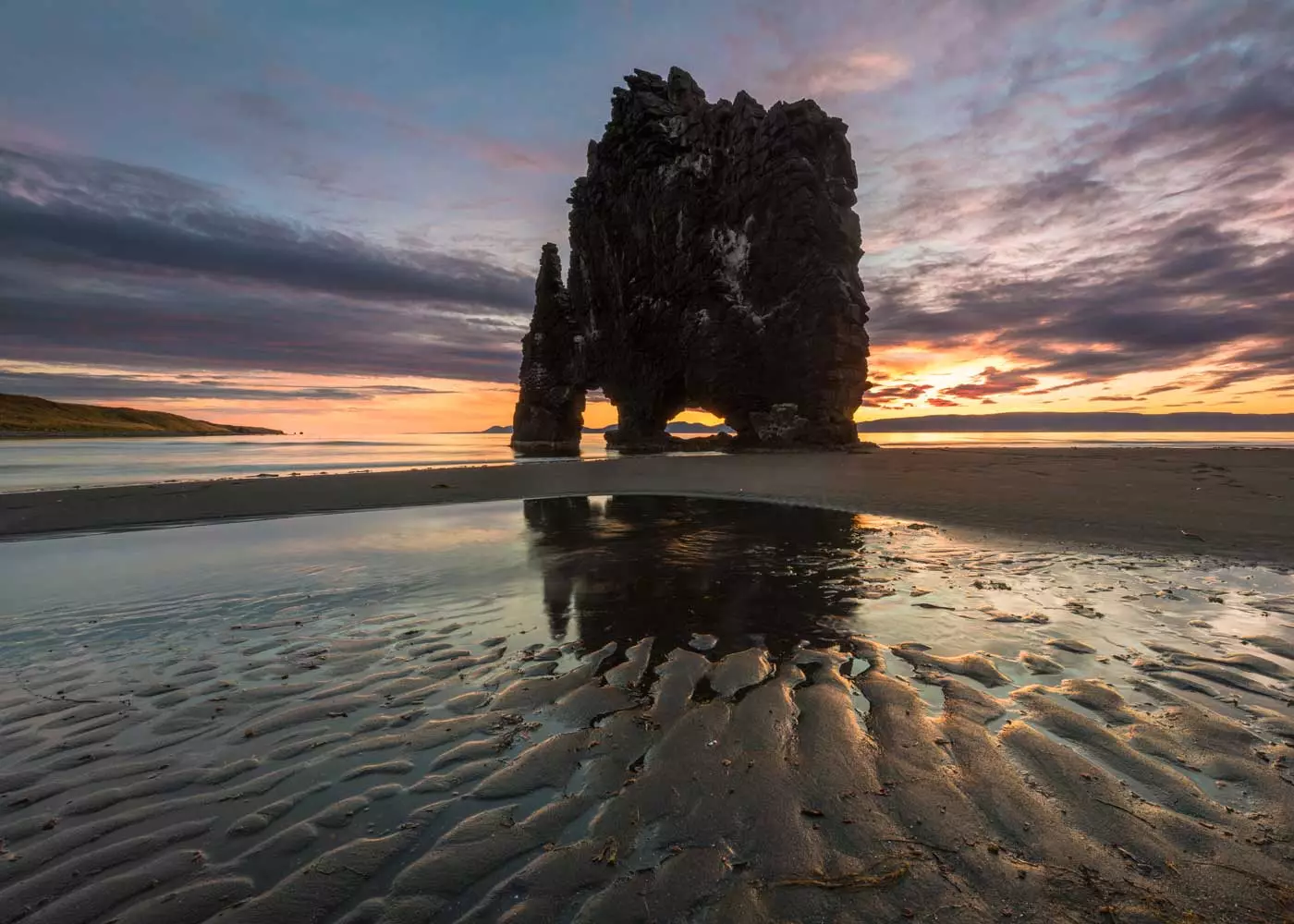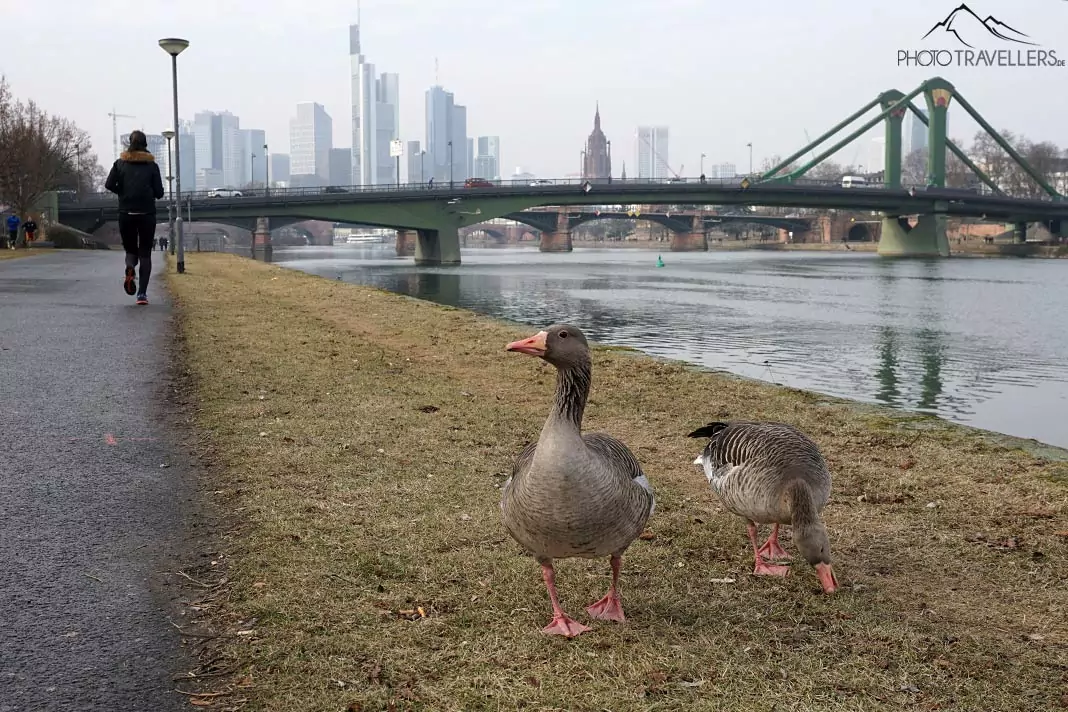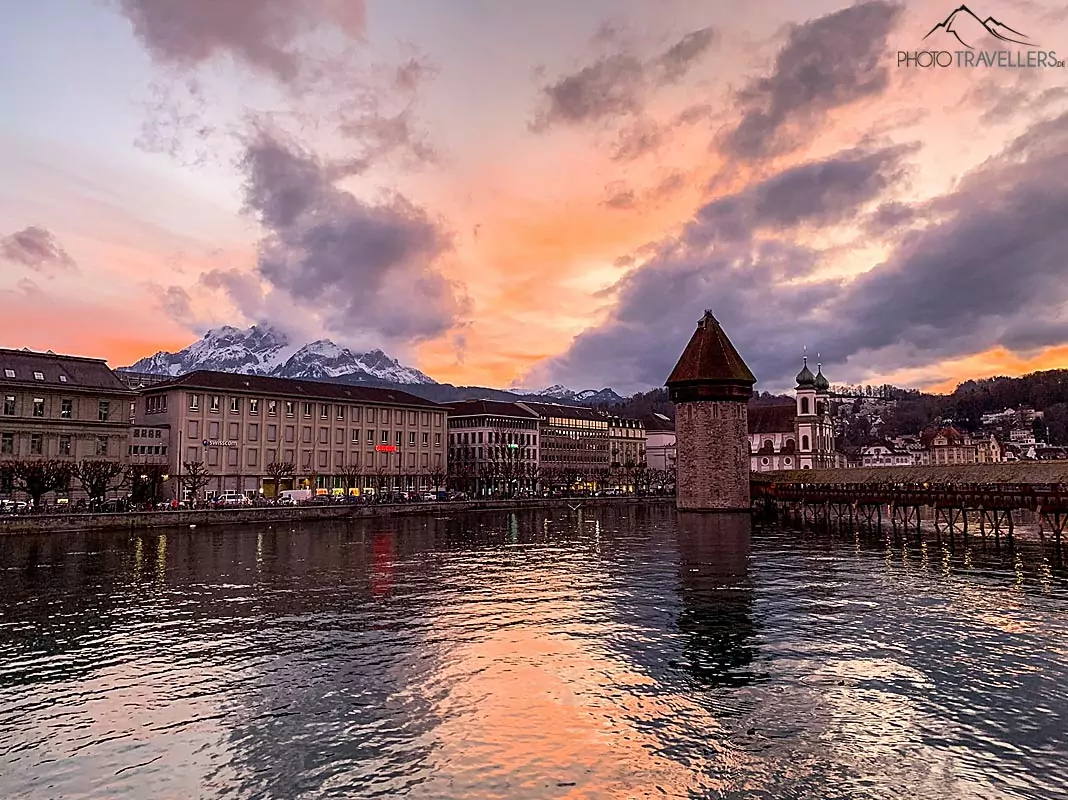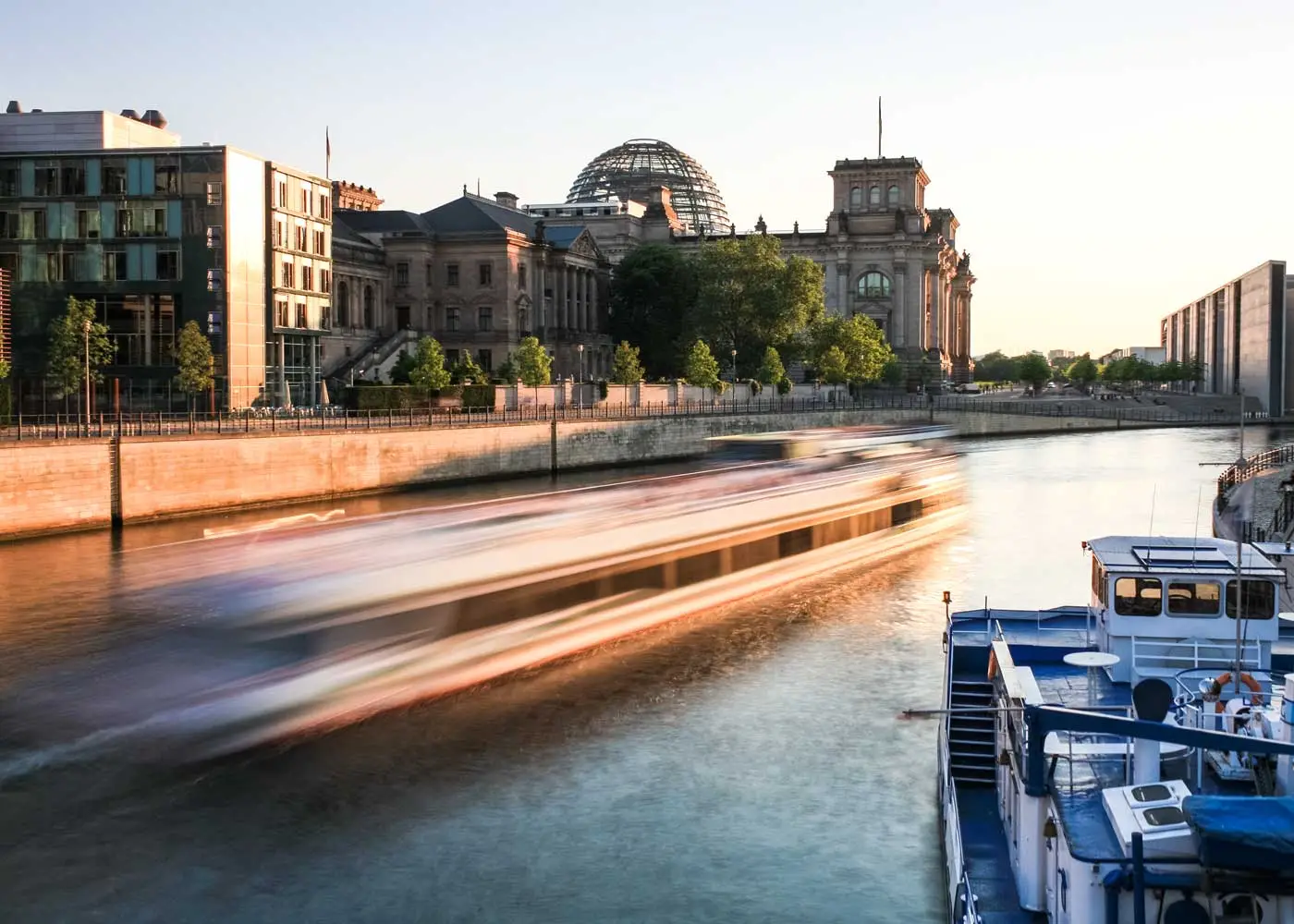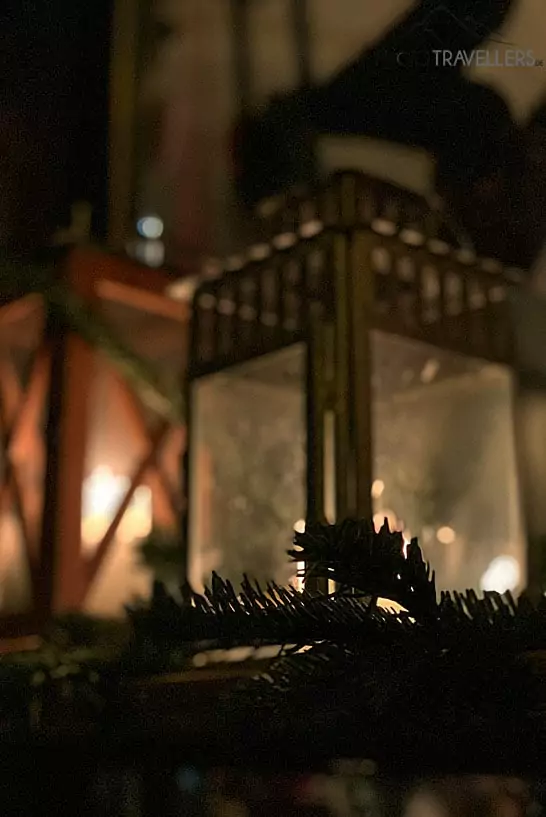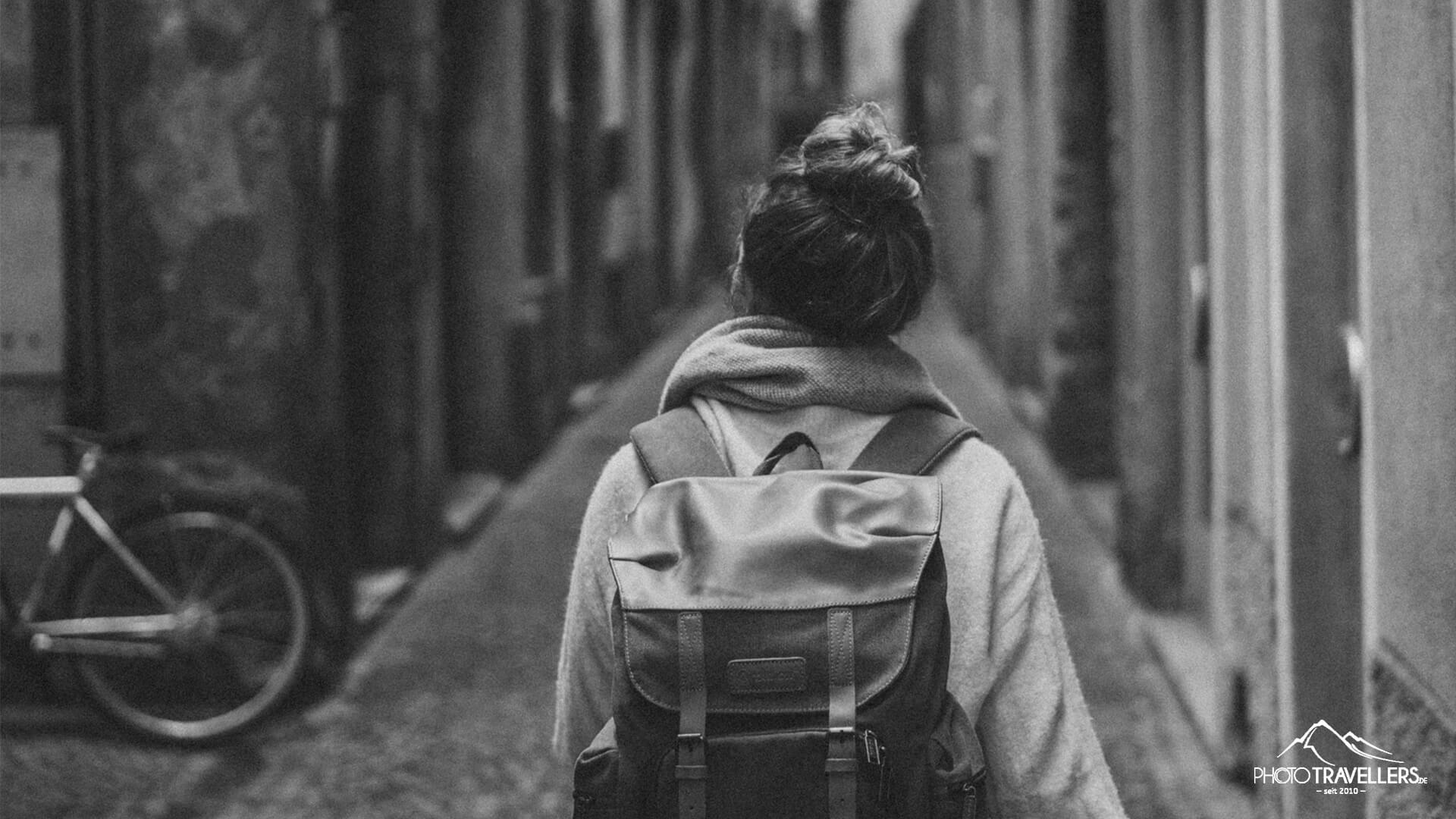
You have to do this at least once on your holiday in Denmark

Hi! Wir sind Biggi & Flo
Wir nehmen dich als Reisejournalisten mit zu den schönsten Orten der Welt!
Werbehinweis: Alle mit einem * markierten Links sind Werbelinks.
What you must do on your trip to Denmark
The coolest activities in Denmark
Denmark is beautiful. However, I didn’t know that until I visited this country. The Baltic Sea coast and the North Sea coast – both have their charm. Denmark has enchanted us. Should you visit Denmark in the near future, too, then we’ve compiled a few very special tips for you that you definitely shouldn’t miss. We would even go so far as to say: if you haven’t done this in Denmark, then you haven’t experienced the country properly.
Wandering through the dunes
To be honest, the dunes in Denmark were my personal highlight. I liked the dunes on the beach in Henne best (GPS: N 55 43.832, E 8 10.077 → Google Maps). The sunrise there was a real experience for my mind and soul. We stood amid the vast dunes of white sand and saw the sun rising into the sky like a ball of red flames. As soon as the sun had risen, it bathed the grass on the dunes in a golden light. I will never forget this atmosphere in the dunes. It was incredibly beautiful. This moment is embedded in my heart. The sand dunes are very changeable – and that’s exactly what I like about them. The nature changes the dunes on a daily basis. Nothing stays put. Movement is good. I can’t stand stagnation. This is probably why these transient and moving dunes have fascinated and cast a spell on me.
The big migrating dune Råbjerg Mile near Skagen (GPS: N 57 38.948, E 10 24.439 → Google Maps) might be the most spectacular one. This dune resembles a vast desert. The structures and forms in the sand were lit up by the rising sun. This moment was so beautiful. I was strolling through the icy sand barefoot. And all around me, everything was moving.
Kite flying
Shut your eyes for a second and think back to your childhood. Autumn, rustling, colourful leaves, stubble fields, wind and in your hand, the tether of your kite. You feel incredibly happy and free, as if you were flying yourself. We’ve reclaimed this childhood feeling in Denmark. The North Sea as well as the Baltic Sea are known for their strong winds. So we bought a kite at the supermarket. Not an expensive one, but at least steerable.
Then we went to Grønnestrand (GPS: N 57 08.634, E 9 16.738 → Google Maps) near Lyngmøllen. We took out our kite and connected the tethers to the frame. Soon, this little kite would be in the air – like old times. Our tip: tie a figure-of-eight knot, like the one used in rock climbing, to secure the tethers in place.
We made our way through the sand at Grønnestrand. The beach was deserted, it was only us and our kites. I held the kite into the wind, Flo unwound the tethers. And then I held the kite high into the air for the first time in about 20 years. Yeah, that should be right. The wind took a hold of the kite and I called “ready?”. “Ready”, called Flo, who was at least as excited as I was. And all of a sudden, the kite was in the air. We had to find our rhythm, but it worked. We were flying a kite at Grønnestrand. It was being lifted high into the air again and again, the wind was blustering through our hair, colouring our cheeks red. And then the sea air kicked in – wonderful. We were beaming with joy like little children. We cried out in excitement and felt the same feeling we did as kids: freedom and pride. Proud to be able to hold our kite in the air. A sublime and joyous feeling. You definitely shouldn’t miss out on that and on the Danish coast, the wind conditions are perfect for kite flying. So do the same thing we did, go to a shop and buy a kite. You’ll love it.
Going into the sea barefoot
Yes, with rough winds and temperatures below ten degrees Celcius, the North Sea isn’t exactly warm. But don’t be so coy! You definitely shouldn’t miss out on the feeling of the North Sea sand between your toes. The Danish coast, especially the North Sea coast, is rich in gorgeous, long, sandy beaches with extremely fine sand.
The wind in my hair, the sea breeze in my nose – I had to do it. I took off my socks and shoes and walked into the water. I have to admit, it was freezing. But also a great feeling. After all, I was the only person standing in the sea barefoot at that moment. Nobody else dared to do it. The looks I got were looks of admiration – I’m sure of it. And even if that’s not the case, I’m still ahead of the competition: I was feeling connected to nature more than ever. And after a few minutes in the water, I was getting used to the temperature as well. Sand between my toes, the gorgeous backdrop of the beach of Hvide Sande, the soothing sounds of the sea in my ears and I was feeling so free and close to nature.
Trying ymer
The name alone has convinced me to buy it. And because I want to try everything that’s typical of the country I’m visiting, of course I had to try ymer, too. What is ymer, you ask? It’s a Danish product with the consistency of yogurt, so quite viscous, but that tastes sour like buttermilk. If you’re a fan of buttermilk and yogurt, like me, then you’ll love ymer. And even though the packaging looks like a yogurt drink, don’t let yourself be fooled. When you try to drink it, it takes a while and then you have a viscous liquid in your mouth. Ymer is rich in protein and perfect for athletic people with a high-protein diet. Ymer tastes good by itself, but also with cereal and fruit. And I bet that you can bake amazing cakes with ymer. A true allrounder. Ymer has been around since the 1930s and you usually eat it with rugbrød breadcrumbs and brown sugar. This is called ymerdrys. Wikipedia also states that the buttermilk-like product is named after the primordial being Ymir in Norse mythology. And this giant apparently fed from the milk of the primeval cow Auðumbla.
Whisky tasting in Stauning
If you don’t drink, you can skip this part. But for everyone interested in whisky, we can only recommend visiting the great whisky distillery near Stauning in West Jutland (Whisky A/S Stauningvej 38, 6900 Skjern). We’ve received an exclusive tour which we loved. The whisky produced there is very well-known and immediately sold out once it’s back in stock. Even the Danish Prince tried and liked the whisky. Stauning Whisky is one of the first Rye Whiskies produced outside North America. This whisky is stored for three years in bourbon barrels made from oak. Apart from that, visitors can also try and buy two other kinds of whisky: a Smoked Single Malt Whisky and a non-smoked, traditional one. The distillery was founded in 2005 by nine men who, at first, pursued whisky making as a hobby and, in the process, produced such a high-quality product that by now, the whole world is impressed by it. Since 2015, Diageo, one of the world’s biggest producers of alcoholic beverages, holds a share in Stauning Whisky. This is why the distillery (“Destillery”) is constructing new production sites at the moment to increase their output. We’ve been able to try all three whiskies and our favourite was the Rye Whisky. The distillery is definitely worth a visit because you can observe the production from up close. Doesn’t matter if you’re watching the specially built device turning around the sprouting grains or the fermenting, bubbling brew (“gären” ohne h). The smell of whisky alone that fills the air turns this visit into an extraordinary experience.
Spotting bats in a limestone cave
The biggest limestone cave in the world called Mønsted Kalkgruber is located in Stoholm. For this reason alone, you should definitely pay it a visit. But the highlight lies in the depth of the limestone. More accurately in the dark caves and walls, because the limestone mine is the home of about 18,000 bats. They hibernate there and with a bit of luck, you can spot some of them. So Flo and I embarked on a very special journey. We can only recommend the limestone mine. It’s really impressive. The best part is that all visitors can move freely in the maze of underground tunnels and explore the caves. Each path branching off the main pathway holds its very own secrets. Fun fact: in the limestone caves, they also store a special kind of cheese.
What you should definitely consider doing: grab a torch and set out to discover the bats. When hibernating, they retract into darker corners, caves and ledges. However, if you’re patient and use your torch to closely observe the walls, you can find them. Fluffy little animals hanging upside down. We thought they were pretty cute. And don’t be afraid, the bats are harmless and are just chilling on the walls. They’re mostly not deterred by all the visitors. So go looking for them and admire these fascinating creatures. By the way, if they’re not hanging from the ceilings of the limestone caves in winter, they’re usually on a hunt for insects in the whole of Jutland in spring and summer. Bats are also the only flying mammals.
Searching for amber
We don’t know if we’ve found real amber. But that’s not what the search is about. When walking along the beach and looking for amber in the sand, you’ll forget all the things on your to-do list. You can clear your head while not even looking where you’re going but keeping your eyes on the ground to find the stones that can, in some cases, be more valuable than gold. And if you find the right ones, you have a tinge of gold in your hands. Real amber is transparent and looks like liquid gold that has solidified.
But what exactly is amber? Amber is fossilized tree resin. More accurately, it comes from pine trees that existed 50 million years ago in the south of Scandinavia. If a tree is “hurt”, resin comes out of that wound. And if you’ve ever touched resin, you’ll know that it’s very sticky and hard to remove. In special cases (Komma weg im Deutschen), insects have been trapped inside the amber. In millions of years, these trees and the resin have been flooded by the sea. This is how the amber ended up in the sea and on the beaches of Denmark.
So if you’re lucky, you can still find amber on the beaches of the Danish North Sea and Baltic Sea. We’ve obviously tried to find some peculiar stones, too. But we don’t know if it’s cloudy amber or just quartz. If you have any doubt, you can always do a salt test. If you add a lot of salt to the water, real amber should float.
But as we already mentioned: even if you don’t find real amber, it’s a lot of fun to challenge yourself and others. Especially if you show each other what you’ve found and everyone’s convinced that it’s actually amber. Try it. You’ll love it.
Standing in the North Sea and in the Baltic Sea in Grenen
Grenen – another magical place (GPS: N 57 44.685, E 10 38.919 → Google Maps). This is the tip of Denmark, where the North Sea meets the Baltic Sea. And you can even see that. The rough North Sea on the left and the roaring Baltic Sea on the right. And in the middle, they unite. This spot is noteworthy because when else do you have the possibility to stand in the North Sea with one foot and in the Baltic Sea with the other? Precisely – only here. And that’s why you should do it. So go there, take off your shoes and make your way into the water. Maybe you’re lucky and it’s a nice, sunny day. Then you won’t even mind the cold. Still, we were the only ones who dared to go in. It wasn’t until later that a few others finally joined us.
The best way to experience this unique display of nature is to choose this spot consciously. Walk into the water, let your hair be tousled by the wind and feel the waves splash against your legs.
With a bit of luck, you can even see a seal colony. But please keep your distance. The seals might seem cute and friendly, but they’re still predators. A seal can in fact kill a porpoise. They do seem lazy on land, but when you get too close, they’ll show you that they don’t like that. In addition, you should never cross the boundaries of their habitat. Some tourists want to take a selfie with a seal at all costs – don’t. You shouldn’t mess with nature. You can also take great photos without getting too close.
Chasing rainbows
We’ve been calling Denmark “land of rainbows” since day two. Due to the quickly changing weather, no day went by without a rainbow. The different colours stood out beautifully against the sky – and then it was vital to be quick because such a spectacle of nature doesn’t last forever. So it didn’t only happen once that I shouted “stop the car!” and Flo had to find a parking spot. I mean, you can’t miss out on seeing Highland cattle calves with a rainbow, can you? But also on the beach, above the well-known bunkers or in the middle of the sand dunes – we saw rainbows everywhere. Even better if you’re quick enough to take a photo. So keep your eyes open and stay flexible. These are the secret ingredients for a great rainbow picture.
Always carrying a second set of dry clothes…
…including underwear. Yeah, you’re laughing now. Usually, you pack a second set of clothes for children. After all, the chances of a t-shirt turning into a stained piece of art are pretty high. In Denmark, however, adults should also carry a second set of clothes. Including underwear. Why? The weather is just unpredictable. As much as we enjoyed standing in the wind and didn’t mind small showers of rain. But when the wind is blowing hard and it starts to rain cats and dogs, you’ll be soaked within minutes. And I’m not exaggerating. Soaked to the bone. You either walk around dressed head to toe in rainwear, which can sometimes be a little embarrassing, or you risk it. We did that once on the beach. Before we knew it, we were completely soaked. Since then, the rain gear has been our constant companion. I can only highly recommend a really good rain jacket. Without it, you won’t stand a chance in Denmark. In addition, rain trousers also help against a sandstorm, which can occasionally occur in Denmark. If you’re into sand peelings, though, just ditch the rain clothes.
Bracing yourself against the wind
It is indeed an experience to have the wind blowing so hard that you can’t breathe and have to tuck away your hair to keep the strands from flying through the air and into your face. One day, the wind was so strong that I wasn’t even able to walk in a straight line. At a spot like Slettestrand, where the wind can gain quite some speed in the dunes, you suddenly feel really small. We are aware of the forces of natures, but on that day, it was like standing in the middle of a hurricane. The clouds were constantly creating new shapes and the sky looked really dramatic. Over an hour, we withstood the wind – and we felt happy. Flo took some gorgeous photos. Nonetheless, he had to protect the camera from the rain more than once. And during a storm, the rain feels like hail on your skin – a whole new experience. In really strong gusts, you can even lean into the wind and pretend to be slouching on a comfy sofa – you just won’t fall. And on top of that, it’s a lot of fun to find the perfect lying-in-the-wind position. So don’t be afraid and brace yourself against the wind.
Eating Smørrebrød
Danes usually eat a rich breakfast, and for lunch they have Smørrebrød (pronounced “SMUHR-bruth”) – or at least that’s what we’ve been told. Obviously, not all Danes will eat Smørrebrød for lunch. Still: This national dish – or more accurately this midday snack – is a must try. Smørrebrød is essentially just buttered bread that’s been completely pimped up by the Danes. In this form, you mostly can’t see much of the bread. The thin slice of rye bread is drowning in toppings. In Skagen, VisitDenmark invited us to the well-known restaurant Dit Smørrebrød. We were able to try this amazing delicacy. And with every Smørrebrød, the guest gets a liquor recommendation. Vegetarians also get their money’s worth. With very strong cheese, they also serve a strong, savoury liquor, while you get a milder one with baked camembert and cranberry sauce. For fish lovers, there’s herring with onions and gherkin or baked herring with sweet, pickled onions. And pork or ham as bread toppings are pretty good, too. The combinations are endless, delicious and perfectly thought through. This might be the reason why egg, prawns and remoulade sauce is a classic. With three Smørrebrød, though, your stomach is pretty full and thanks to the liquor, a comfortable warmth starts spreading through your body. We definitely recommend a couch after this snack.
Going on a mountain bike tour
If you only have a few days to discover the beautiful country of Denmark, you can explore nature by mountain bike. There are many designated mountain bike trails in Denmark. With our guide John, we set out for a nice viewpoint. This was my first mountain bike trail and I was loving it. It was a great feeling to navigate through the thicket, over slippery roots and dirt. The fat tyres of our bikes (“unsere Bikes”) had no problem with sandy ground either. John proved to be as tough as nails and wore short cycling shorts. Sadly, the weather wasn’t able to pass this summery feeling on to us. But the sun did come out during our tour, which meant that we reached our viewpoint in Svinklovene (GPS: N 57 08.845, E 9 17.911 → Google Maps) in the best of moods. After enjoying the superb view and letting the wind tousle our hair, John offered us elderflower lemonade. Then we made our way back on mountain bike trails as well. We really enjoyed the trails, so we’ll definitely do a similar kind of tour soon.
Climbing a lighthouse
On the coastline, lighthouses have always been essential. They save lives. They also offer an amazing view of the sea and the surrounding region. We’ve explored a total of three lighthouses in Denmark. The Lyngvig Fyr (GPS: N 56 02.988, E 8 06.223 → Google Maps) managed to stun us in the morning as well as in the evening. We were lucky both times and experienced a sunset that was just as beautiful as the sunrise we had witnessed. The lighthouse is situated in the middle of sand dunes. A little extra tip: take a look inside the lighthouse as well. Once you’re inside, immediately look up. From this perspective, you have a great view, especially in the architectural sense. A blue spiral is winding all the way up to the top.
The view from the Lyngvig Fyr is a dream. You have a wonderful view of the dunes and the sea, but you can also see the fjord on the other side. The wind up there can blow pretty hard though. At times, we really had to brace ourselves against the rough wind. But the view makes up for it.
The Skagen Gra Fyr (GPS: N 57 44.133, E 10 37.808 → Google Maps) is equally stunning. It’s located in Skagen, near Grenen, directly by the sea with beautifully constructed bays. They’re meant to keep the sea from consuming the dunes and robbing the lighthouse of its foundation.
The Rubjerg Knude Fyr (GPS: N 57 26.932, E 9 46.469 → Google Maps) is less lucky. This lighthouse in the well-known town Lokken is set to fall into the sea in a couple of years. Since 1990, the lighthouse had been telling sailors where the land was. At that time, the Rubjerg Knude Fyr was still 200 metres away from the coast. However, the sea has been getting closer. Now, the lighthouse is a mere 30 metres from the coastline. In 1968, the lighthouse stopped operating. This means: if you’re in Denmark, you absolutely have to take a photo of this tower. Soon, it might be gone. Currently though, you can still climb the Rubjerg Knude Fyr and enjoy a great view.
Exploring bunkers on the beach
Along the North Sea coast of Jutland, you can find a gigantic relic of a bygone era. This era, however, isn’t exactly associated with glory. In World War II, the Germans built a coastal defence system in Denmark. Around 2000 concrete bunkers can still be found on Danish beaches. We’ve visited a couple of them and took in the spirit of a bygone era. Many of the bunkers are still in good condition and tempting to explore. You can actually walk around in some of the concrete blocks and shine a light on the walls with your torch. A few bunkers even have intact staircases on the outside, which you can use to climb the roof. Nonetheless, a lot of the bunkers have been swallowed up by the dunes. Only the corners stick out of the sand and remind you of the structure that had once been there. Some are alarmingly close to the dunes’ edges and in danger of falling onto the beach. Others are already inside the sea and the salt water is slowly eating into the concrete walls. The bunkers are an amazing backdrop and photo subject for photographers. Definitely take a look at them!
Eating Brunsviger
Oh yeah – it was soooo delicious. In a beautiful café by a mill, we sat down in the sun and were enjoying the great weather. Along with that, we indulged in a coffee and a big piece of Brunsviger. Brunsviger? What that is? It’s Denmark’s most delicious pastry. More accurately: Brunsviger is basically yeast dough with a topping made of butter and brown sugar.
The first bite already made me smile. This fluffy dough and the delicious, soft taste. In combination with brown sugar, the yeast dough tastes simply amazing. First, the dough is baked in a baking pan or on a baking sheet. After a short while, you spread a mix of sugar and butter on the dough. I absolutely loved this sweet delicacy.
